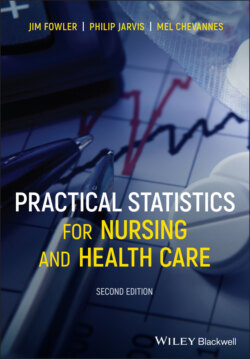Читать книгу Practical Statistics for Nursing and Health Care - Jim Fowler - Страница 14
2.3 Counting Things – The Sampling Unit
ОглавлениеWe sometimes wish to count the number of items or objects in a group or collection. If the number is to be meaningful, the dimensions of the collection have to be specified.
For example, ‘the number of patients admitted to an accident and emergency department’ has little meaning unless we know the time scale over which the count was made. A collection with specified dimensions is called a sampling unit. An observation is, of course, the number of objects or items counted in a sampling unit. Thus, if 52 patients are admitted to a particular Accident and Emergency (A&E) department in a 24‐hour period, the sampling unit is ‘one A&E 24‐hour period’ and the observation is 52. The sample is the number of such 24‐hour periods that were included in the survey. However, the definition of the ‘population’ requires care. It might be tempting to think that the population under investigation is something to do with patients, but this is not the case when they are being counted. The statistical population comprises the same ‘thing’ as the sample units that comprise the sample. In this case, the statistical population is a rather abstract concept, and represents all possible A&E department 24‐hour periods that could have been included in the survey.
It is very important to be able to identify correctly the population under investigation, because this is essential in formulating a ‘null hypothesis’ when undertaking statistical tests. This is the subject of Chapter 11.
